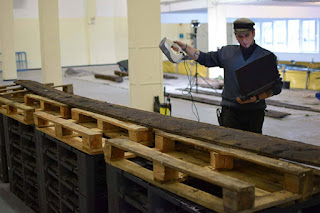During the annotation procedures, the experts have that digital textured meshes with the real physical lumber of that Viking shipwreck.
“Following these two actions, it created a 2D technical drawing for every the timber, one in a time, in a complete full detail. The drawings are essentially distilled editions of 3D models, illustrating only the interpreted data that is related to researchers, with the timber outline and cross-sections in showing its shape, and color-coded polylines illustrating the different characteristics being annotated on the lumber in Rhino. Through having the 2D technical drawings of the timber, some other researchers may comprehend the timber in just a glance,” said by Van Damme.
“The best advantage of Artec Eva was, in comparing to the Photogrammetry, it was even more of a user friendly, which means that even the populace with relatively tiny experience functioning with the 3D scanning would bear out the documentation, and it was more ‘fun’ and more ergonomic to scan timber this way, instead of taking the 300+ close up photos of every timber from an awkward angles,” said by Van Damme.
The technical drawing, together with the 2D views of textured meshes of timber and wrote descriptions of every one were added to Timber Catalog in the end of a published report, and it has permitted the researchers to examine every timber in details. The Timber Catalog contained the legend that describes what the different dyes on the technical drawings referred to.
The technical drawing of the Viking wreckage was added to Timber Catalog in the end of a published report that allowed researchers to study every timber in details.


No comments:
Post a Comment